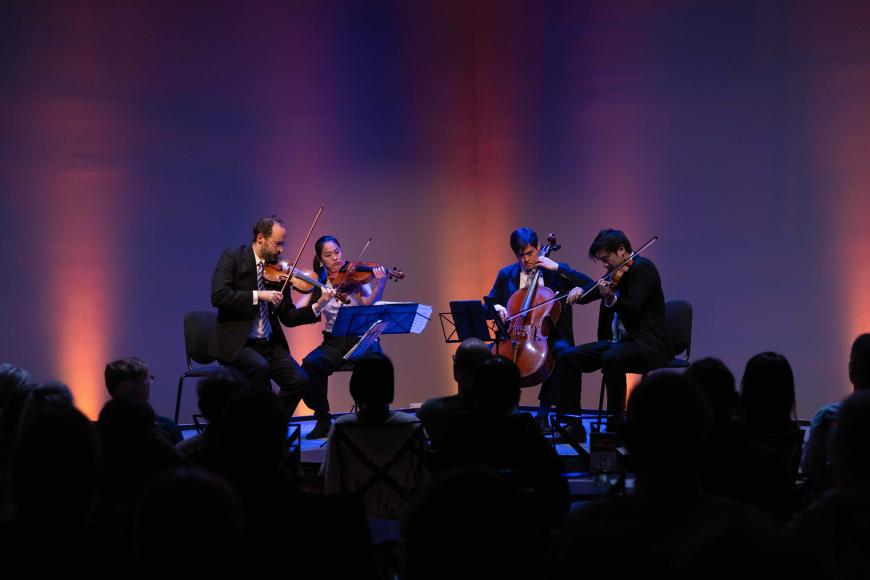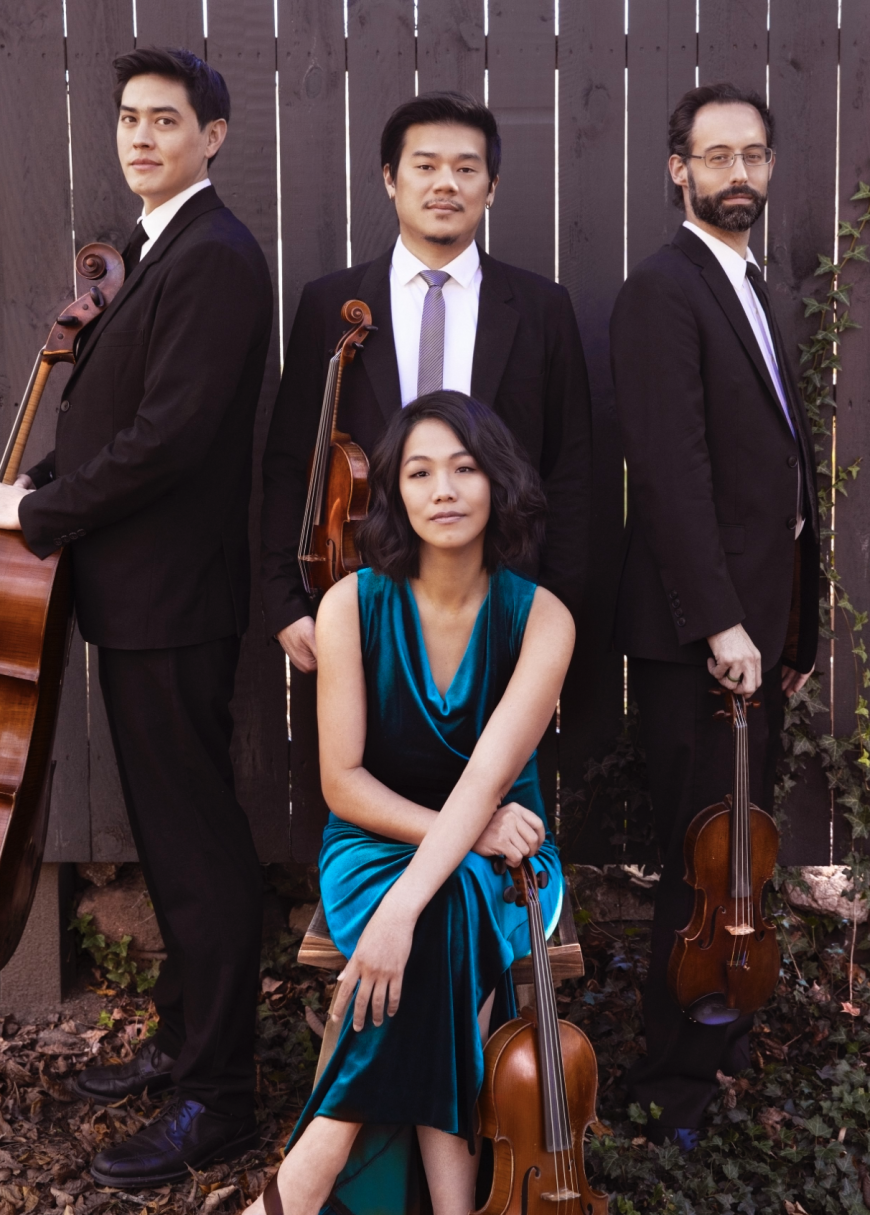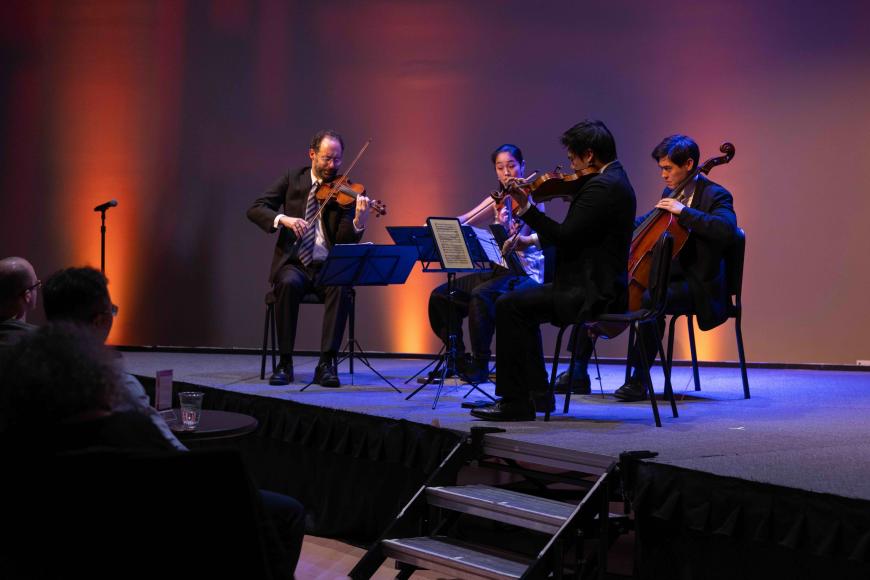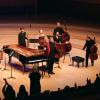
The Telegraph Quartet brought its signature rigorously unified style to Bing Concert Hall’s Studio at Stanford on Saturday, Feb. 24. The repertoire consisted of works by what violinist Joseph Maile introduced as a 20th-century version of the “Three Bs”: Alban Berg, Benjamin Britten, and Grażyna Bacewicz.
The last of these names may be unfamiliar. Bacewicz (1909-1969) is generally considered Poland’s most distinguished female composer. If she’s not added to the list of generally recognized greats, it won’t be because the Telegraph Quartet failed to do her work justice on Saturday.

Their performance of Bacewicz’s Quartet No. 4 (1951) was magnificently executed. From a sleek acceleration out of the introduction to long successions of tutti chords smoothly presented and ideally coordinated to elegant utterances of every little phrase by each player individually, this work was presented as an appealing masterpiece in a consonant modernist style. The slow movement featured beauty, drama, and hushed expectations. The finale, chipper and fiery, supported Maile’s suggestion of the influence of Tchaikovsky in its cadences and fast runs, a flavor I hadn’t picked up on in this work before.
Berg’s Lyric Suite (1926) is not entirely written according to the 12-tone serialist method that Berg learned from Arnold Schoenberg, but listeners may be forgiven for not noticing the difference between compositional procedures. This music is the most stringent modernism throughout, though at least it’s interesting to listen to, and it gets more interesting as it goes along. It’s up to the performers to enact the lyricism that the title promises.
The Telegraph Quartet players brought out momentary lyric phrases, that could be heard as tonal or at least conventionally chromatic, which lurk throughout the music. These contrasted with stranger sounds. The Andante amoroso sounded jaunty, of all things, while the Allegro misterioso evoked hushed insects, and the Presto delirando came out as angry driving music alternating with creepy shimmering sounds. The players’ rigorous power, either open or veiled, and their impressive unity of playing, especially in some slow oscillations in the Andante, made this a memorable performance.
The Telegraph’s interpretation of Britten’s Quartet No. 1, Op. 25 (1941), took more getting used to. Where the slashing tuttis in Bacewicz had been smooth yet firm, the ones in Britten’s opening Allegro vivo, though strong, were harsh and rough. The hushed Andante sostenuto that introduces and recurs in this movement conveyed more forward drive than stillness. The second movement, Allegro con slancio, was incongruously hearty, which minimized surprise and emphasis in the occasional fortissimo explosions from individual instruments that decorate the music. Again, similar effects in the Bacewicz seemed more potent.
The third movement, Andante calmo in 5/4, which Maile likened to the sound of waves, came across more hymnlike in its thick harmonies and the solemnity of its motion. Both the second movement and the quizzical Molto vivace finale, which are very brief, passed by so lightly as to feel more like intermezzi or appendices than full movements.
But the quality of the playing remained very high, and any critiques are matters of interpretation and personal taste. The Britten is perhaps the finest and certainly the most imaginative of the program’s three works, and its quality was unmistakable in this performance. The Telegraph Quartet’s fondness for Britten’s work was further demonstrated by the choice of encore, the Waltz from Britten’s Three Divertimenti for String Quartet.

Maile took the position of first violin for the entire concert. He played mostly with a light, elegant tone, which became deeper and firmer in Britten’s Andante. Eric Chin on second violin was the player assigned most of the high and thin passages, often in harmonics. Pei-Ling Lin, seated next to Maile in an unusual position for a violist, had a strong tone in solos, particularly the long, lonely passage that concludes the Lyric Suite. Jeremiah Shaw, the cellist, often played low pizzicato notes while his colleagues navigated the stratosphere, as in the introduction to the Britten.
A strictly modernist program such as this one will not be the most popular. But performances as good as these show that 20th-century modernism can generate exciting and moving music that speaks eloquently in comprehensible language.



